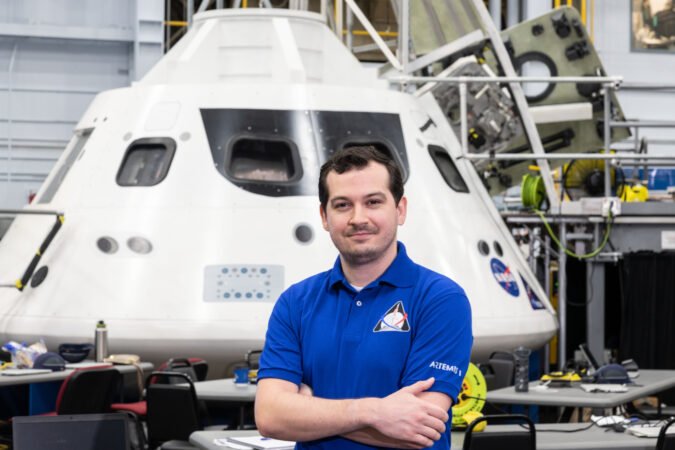Essential Insights
-
Key Role in Artemis II: Mark Cavanaugh, as Orion integration lead at NASA, ensures critical systems in the Orion spacecraft are safe and ready for its first crewed mission to the Moon since Apollo.
-
Technical Oversight: He oversees the integration of the European Service Module, responsible for essential life support systems, including oxygen and temperature regulation.
-
Mission Evaluation Leadership: Cavanaugh manages the Orion Mission Evaluation Room, coordinating real-time monitoring and problem-solving during Artemis missions to guarantee safety and mission success.
- Inspirational Journey: With a lifelong passion for aerospace, Cavanaugh emphasizes collaboration, creative problem-solving, and outreach to inspire students, reinforcing that perseverance can lead to fulfilling dreams in the space industry.
Mark Cavanaugh: Ensuring the Safety of the Orion Spacecraft
Before astronauts venture around the Moon on Artemis II, Mark Cavanaugh works diligently to make the Orion spacecraft safe. As an integration lead at NASA’s Johnson Space Center in Houston, he oversees critical systems in both the U.S.-built crew module and the European-built service module. His goal is a seamless combination of these systems for the upcoming journey.
Cavanaugh brings nearly a decade of experience at NASA. He currently manages the integration of the European Service Module, which provides vital power, propulsion, and life support to the Orion spacecraft. His responsibilities include verifying essential systems. These support crew health by regulating oxygen, nitrogen, water storage, and temperature.
Additionally, Cavanaugh serves as a manager in the Orion Mission Evaluation Room (MER). This team closely monitors the spacecraft’s condition throughout the mission. Cavanaugh leads discussions and decision-making during Artemis flights. From prelaunch to splashdown, he ensures that the mission stays on course and safe.
A passion for space exploration drives Cavanaugh. He has dreamt of being an aerospace engineer since age six, inspired by childhood visits to flight museums with his uncle. His excitement grew after a memorable trip to the Johnson Space Center as a fifth grader. “Going from touring to contributing has been incredible,” he reflects.
Cavanaugh’s journey had its challenges. He graduated from Pennsylvania State University in 2011, the same year NASA’s Space Shuttle Program concluded. Job opportunities were scarce, so he joined Boeing, working on the International Space Station. Eventually, he made his way to NASA, starting with the Passive Thermal Control System before stepping into a leadership role on the Orion integration team.
Collaboration has been essential to Cavanaugh’s success. He values empathy and encourages team members to view problems from different perspectives. “We’re all working toward the same goal,” he notes. This mindset fosters constructive discussions and reduces misunderstandings.
Creative problem-solving plays a significant role in his approach. Cavanaugh believes in questioning assumptions and exploring unconventional ideas. “Even if an idea sounds ridiculous at first, it might lead to a breakthrough,” he asserts.
Outside of his professional duties, Cavanaugh enjoys riding motorcycles. He finds excitement and precision on the Circuit of the Americas track in Austin, Texas. He also dedicates time to student outreach, inspiring young minds to pursue their dreams. “I stress that nothing is impossible,” he shares. He encourages students to stay open to opportunities, even if they differ from their original plans.
Cavanaugh’s work on the Orion spacecraft advances technology development. His efforts ensure that future missions to the Moon are not only ambitious but also safe. Through collaboration, creative problem-solving, and a commitment to safety, he helps pave the way for the next generation of space exploration.
Discover More Technology Insights
Explore the future of technology with our detailed insights on Artificial Intelligence.
Explore past and present digital transformations on the Internet Archive.
SciV1

